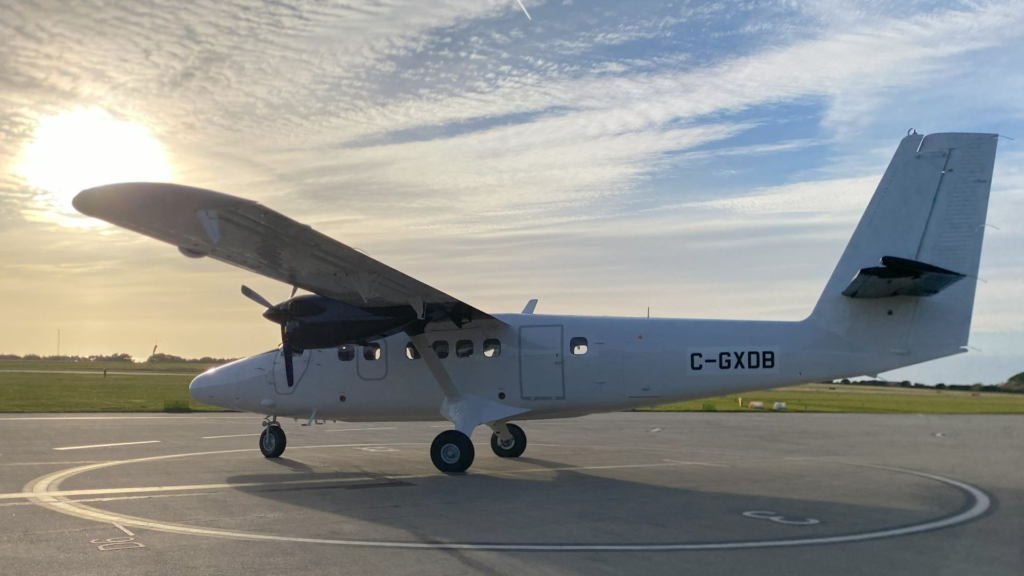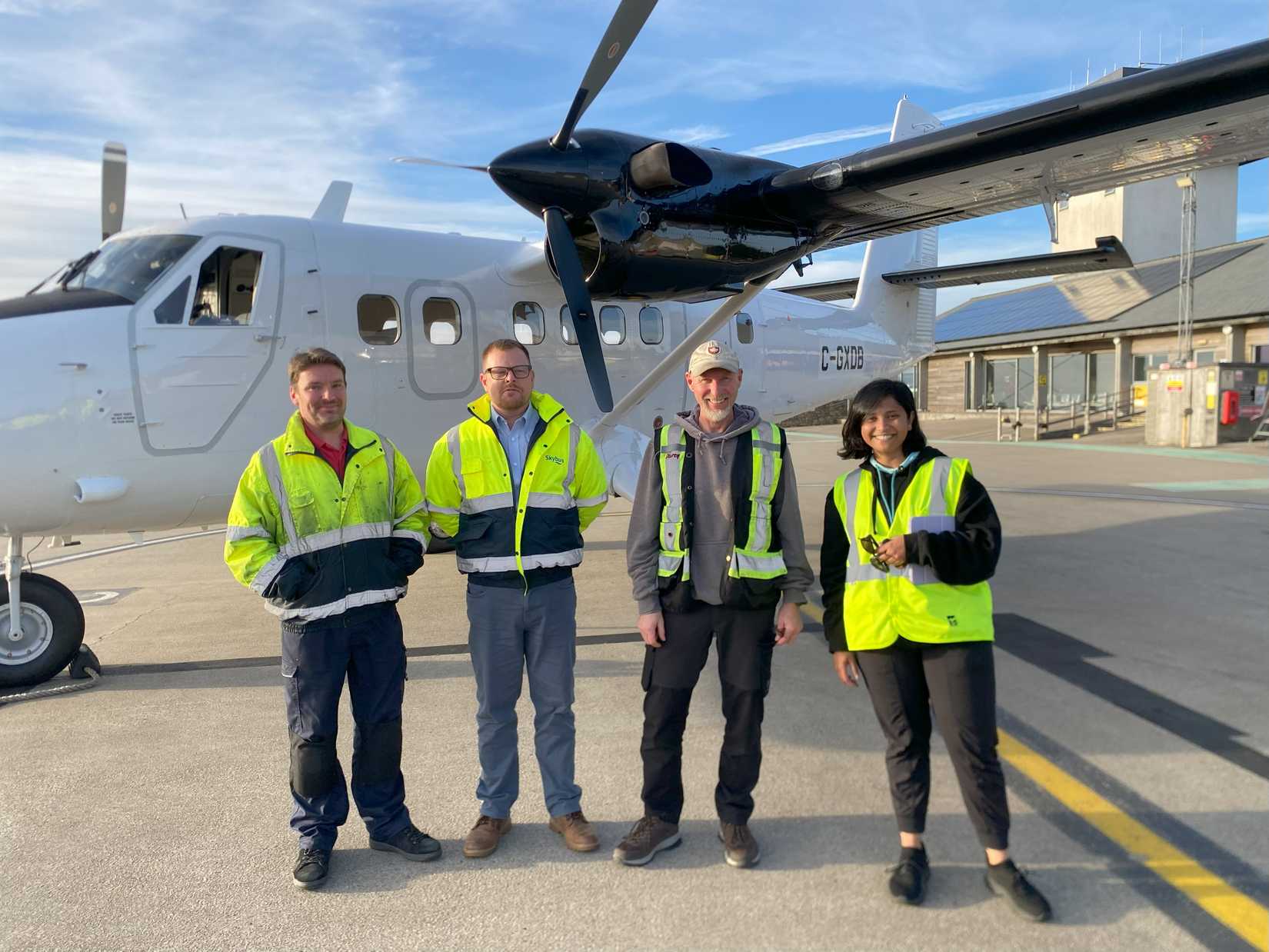The De Havilland Canada DHC-6 ‘ Twin Otter‘ is a popular regional plane that primarily operates short hops between small airports. But what happens when one needs to be ferried 4,000 miles (6,437 km) across the North Atlantic Ocean? As you can imagine, such a journey is a challenging logistical undertaking, but it is one that was successfully carried out earlier this month using a 54-year-old example.
The crux of the matter was a fairly simple one, in that the UK-based regional airline Isles of Scilly Skybus needed another Twin Otter to fulfil an agreement with Guernsey-based carrier Aurigny. However, the aircraft in question came from Alberta in Canada, requiring internal modifications and a multi-leg journey that lasted several days. The trip, it’s fair to say, had more than its fair share of ups and downs.
An Extensive Service History
As pictured above, the plane in question bore the registration C-GDXB for its mammoth ferry flight. According to ch-aviation, this aircraft is a 54-year-old example of the DHC-6-300 model, and it first flew in 1971. Data from Planespotters.net shows it entered service with PIA, and also flew for Air Alpes, Publi Air, Syd-Aero, Coast Air, Northern Thunderbord Air, Era Aviation, Rocky Mountain Aircraft, and Aviastar.
Aviastar withdrew the plane from service in 2017, and it was then stored in Papua, Indonesia (BIK) for five years before being dismantled and shipped to the Canadian province of Alberta in 2022. After three years on the ground being rebuilt, it flew once again on September 16, with this test preceding its ferry flight to the UK. Commenting on its addition, Isles of Scilly Skybus MD, Jonathan Hinkles, explained that:
“Adding a new aircraft not only reinforces our ability to deliver reliable regional air services but also demonstrates our confidence in the long-term future of aviation within the Group.”
A Long & Challenging Journey
According to Flightradar24, C-GXDB, which will bear the registration G-NETS upon entering service with Isles of Scilly Skybus for Aurigny, began its ferry flight on September 29, when it flew for more than five hours from Calgary (YYC) to Thompson (YTH). From here, a six-hour hop followed on September 30, which took the aircraft to Iqualit (YFB), with its onward journey taking place two days later on October 2.
This was the longest leg, with the flight from Iqualit to Reykjavík Keflavík Airport (KEF) in Iceland taking seven hours and 30 minutes. At this point, Hinkles explained on LinkedIn, the crew “were held up in Iceland for two days, although the tail end of Storm Amy brought strong tailwinds which enabled them to complete the Keflavik-Cardiff leg in 2h30 less than planned.” The map above shows that leg.
Cardiff was then the site of another holdup, with customs forcing Isles of Scilly Skybus to, as Hinkles puts it, “spend two days chasing down ever-longer clearance numbers, authorisation codes and licences that no one knew existed.” Clearance was eventually received on October 7, at which point the plane was free to make its final 51-minute flight from Cardiff to Land’s End (LEQ), where it landed at 17:32 local time.
How Was The Aircraft Modified?
The plane, which will join Aurigny on lifeline routes from Guernsey (GCI) to Alderney (ACI) and Southampton (SOU) next month, has 17 seats onboard, but its interior looked rather different during the ferry flight. Indeed, the cabin was fitted with extra fuel tanks, which were removed upon arrival.
Now that the auxiliary tanks are no longer present, Isles of Scilly Skybus is in the process of refitting the aircraft’s seats, which were ferried over with the aircraft in its rear hold. As pictured above, the plane is showing no signs of its advanced age, with its Canadian rebuild having seen its cabin brought up to modern standards with the installation of “new sidewall panels and floor panels (…), [and] new LED lights.”
Likewise, the cockpit has also been brought up to speed, with the implementation of Garmin 600 systems. The aircraft’s modifications will also help to extend its service life, with the deployment of a light but powerful lithium-ion battery reducing engine start temperature and extending time-on-wing. Plenty of work remains to be done, but Hinkles is confident that the plane will be with Aurigny by November 1.


